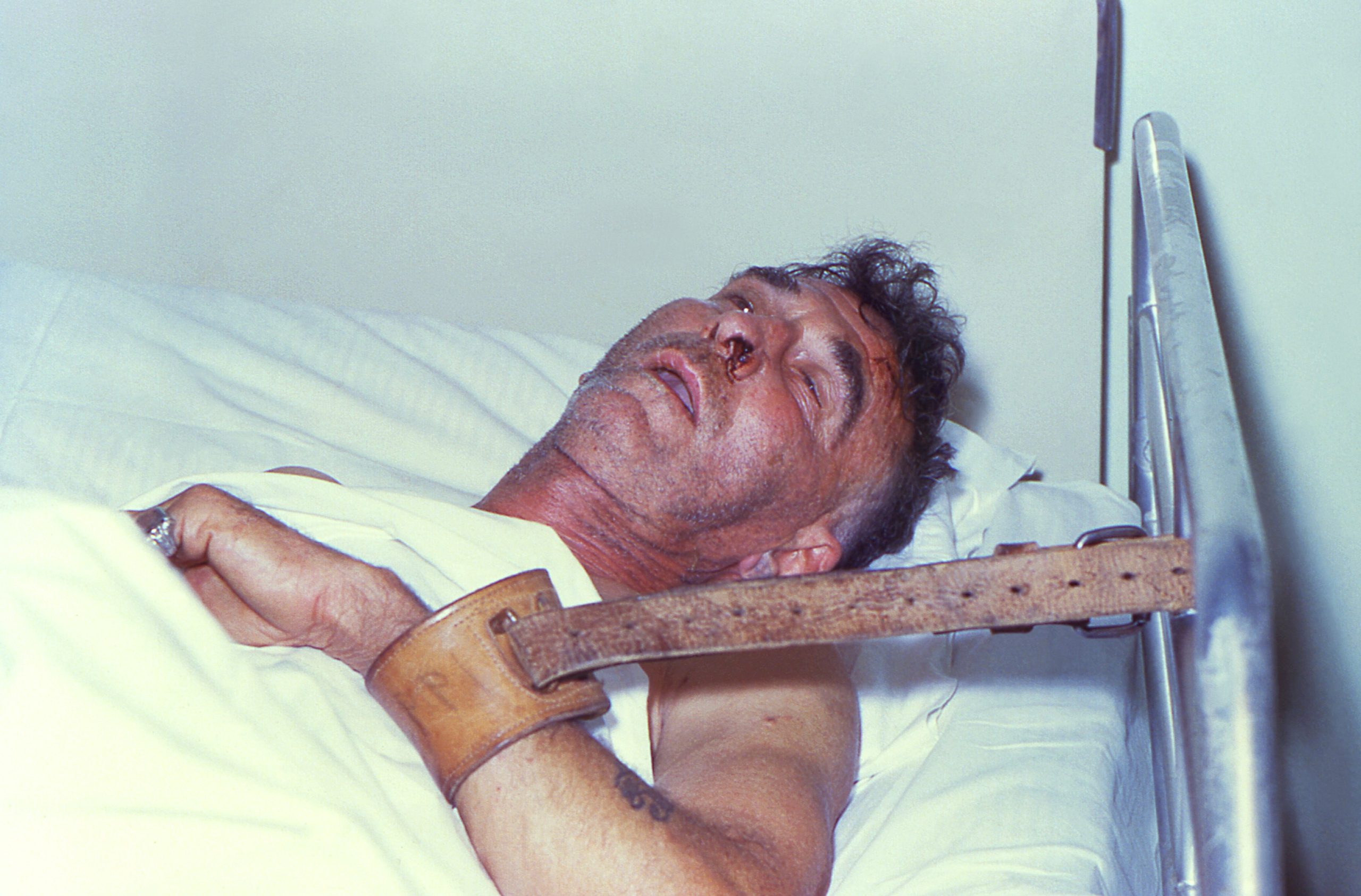Key points
- Always consult with local and state public health officials before collecting samples for human rabies diagnosis.
- There are several antemortem and postmortem tests available to rule out or confirm rabies.

Antemortem testing
The state health department should always be consulted before collecting and submitting samples to the National Rabies Reference Laboratory at the Centers for Disease Control and Prevention (CDC). After consulting with the state health department, any remaining questions can be directed to the Rabies Duty Officer at CDC by calling 404-639-1050.
For more information about how to submit specimens to CDC, see Submitting Specimens for Rabies Testing. The following instructions will guide you in collecting samples for rabies testing.
Antemortem samples
To rule out rabies before death, all four of the listed samples must be collected. Without all samples, a definitive rule-out cannot be provided. Testing should only be conducted at a public health laboratory qualified to conduct this testing. Commercial laboratories should not be used for testing patients suspected of having rabies.
Saliva
Saliva is intermittently shed in patients with rabies. Serial collection of 4 or more samples over 24 hours may be necessary. Using a sterile eyedropper pipette, collect saliva and place it in a small sterile container that can be sealed securely. No preservatives or additional material should be added.
The laboratory should conduct tests to detect rabies RNA by reverse transcription polymerase chain reaction (RT-PCR) of extracted nucleic acids. Tracheal aspirates and sputum are not suitable for rabies tests, and contamination with blood can reduce test accuracy.
Skin Biopsy
A section of skin 5 to 6 mm in diameter should be taken from the posterior region of the neck at the hairline. The biopsy specimen must contain a minimum of 10 hair follicles and be of sufficient depth to include the cutaneous nerves at the base of the follicle. Place the specimen on a piece of sterile gauze moistened with sterile water and place in a sealed container. Do not add preservatives or additional fluids.
Laboratory tests to be performed include RT-PCR and immunofluorescent staining for viral antigen in frozen sections of the biopsy.
Serum
At least 0.5 ml of serum should be collected; no preservatives should be added. Do not send whole blood. If no vaccine or rabies immune serum has been given, the presence of antibodies to rabies virus in the serum can confirm a diagnosis of rabies.
Laboratory tests for antibodies include an indirect fluorescent antibody test and a virus neutralization test.
Cerebral Spinal Fluid (CSF)
At least 0.5 ml of CSF should be collected; no preservatives should be added. Antibody to rabies virus in the CSF, regardless of the immunization history, suggests a rabies virus infection.
Laboratory tests for antibodies include an indirect fluorescent antibody test and a virus neutralization test.
Rabies virus, antigen, and RNA are rarely found in CSF; therefore antigen and molecular test methods are not routinely performed.
Brain Biopsy
The rarity of rabies and the lack of an effective treatment make the collection of a brain biopsy for antemortem testing unwarranted; however, biopsy samples negative for herpes encephalitis should be tested for evidence of rabies infection. The biopsy is placed in a sterile sealed container; do not add preservatives or additional fluids.
Laboratory tests to be performed include RT-PCR and immunofluorescent staining for viral antigen in touch impressions.
Postmortem samples
In certain cases, human samples may need to be tested for rabies after the patient has died. Before sending any samples to the Rabies Laboratory at the CDC, it's important to consult with the state health department. Fresh tissue samples from the central nervous system (brain) should be submitted.
Postmortem diagnosis of rabies is made by immunofluorescent staining of viral antigen in touch impressions of the medulla (brain stem), the cerebellum, and the hippocampus. Fresh, non-formalin-fixed tissues are preferred. Preservation of tissues by fixation in formalin may reduce the accuracy of rabies diagnosis.
